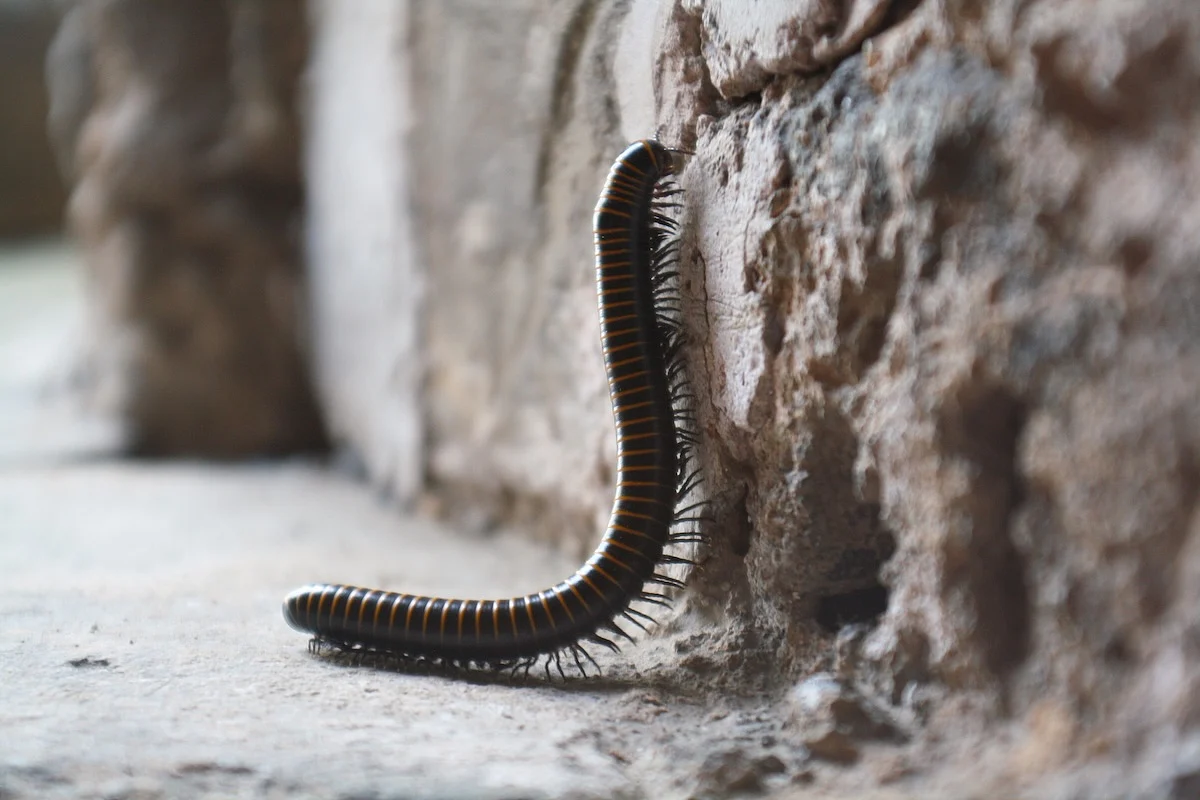Do Millipedes Hold Key to Pain Relief, Parkinson's Treatment?
By Carole Tanzer Miller HealthDay Reporter
Medically reviewed by Drugs.com
 via HealthDay
via HealthDaySATURDAY, August 2, 2025 — To fend off predators, millipedes release defensive compounds that could one day play a part in treating pain and neurological diseases.
"These compounds are quite complex, so they’re going to take some time to synthesize in the lab," said chemist Emily Meyers, whose research specializes in leveraging the chemistry of underexplored ecological sources in the name of drug discovery.
She and her Virginia Tech colleagues recently identified complex structures in millipedes’ natural secretions that can influence specific neuroreceptors in ant brains, according to a campus news release.
The team published its findings earlier this month in the Journal of the American Chemical Society.
The newly discovered compounds are part of a class of naturally occurring alkaloids.
The name Meyers’ team gave them — andrognathanols and andrognathines — is a tip of the hat to the millipede on Virginia Tech’s Blackburg campus that they studied. Its scientific name is Andrognathus corticarius, but it’s better known as the Hokie millipede, a nod to Virginia Tech’s mascot.
For the study, researchers collected the critters from beneath fallen branches and leaves in campus woods. Then, they used a variety of tools to suss out the compounds contained in the millipedes’ defensive glands.
A surprising find: The bugs release the compounds not only to fend off predators but also to share their location with family members.
The compounds make ants — a presumed predator — disoriented. Some of them also interact with a single neuroreceptor called Sigma-1, which has been implicated in such brain disorders as depression, schizophrenia, Parkinson’s disease and Lou Gehrig’s disease.
Meyers and entomologist Paul Marek have previously found that this family of compounds may have potential for treating pain and some neurological disorders. The next step is finding a lab to make them in larger quantities and to learn more about them.
Once larger quantities are in hand, her team. hopes to learn more about their properties and potential in drug development.
Sources
Disclaimer: Statistical data in medical articles provide general trends and do not pertain to individuals. Individual factors can vary greatly. Always seek personalized medical advice for individual healthcare decisions.
Source: HealthDay
Posted : 2025-08-03 00:00
Read more

Disclaimer
Every effort has been made to ensure that the information provided by Drugslib.com is accurate, up-to-date, and complete, but no guarantee is made to that effect. Drug information contained herein may be time sensitive. Drugslib.com information has been compiled for use by healthcare practitioners and consumers in the United States and therefore Drugslib.com does not warrant that uses outside of the United States are appropriate, unless specifically indicated otherwise. Drugslib.com's drug information does not endorse drugs, diagnose patients or recommend therapy. Drugslib.com's drug information is an informational resource designed to assist licensed healthcare practitioners in caring for their patients and/or to serve consumers viewing this service as a supplement to, and not a substitute for, the expertise, skill, knowledge and judgment of healthcare practitioners.
The absence of a warning for a given drug or drug combination in no way should be construed to indicate that the drug or drug combination is safe, effective or appropriate for any given patient. Drugslib.com does not assume any responsibility for any aspect of healthcare administered with the aid of information Drugslib.com provides. The information contained herein is not intended to cover all possible uses, directions, precautions, warnings, drug interactions, allergic reactions, or adverse effects. If you have questions about the drugs you are taking, check with your doctor, nurse or pharmacist.
Popular Keywords
- metformin obat apa
- alahan panjang
- glimepiride obat apa
- takikardia adalah
- erau ernie
- pradiabetes
- besar88
- atrofi adalah
- kutu anjing
- trakeostomi
- mayzent pi
- enbrel auto injector not working
- enbrel interactions
- lenvima life expectancy
- leqvio pi
- what is lenvima
- lenvima pi
- empagliflozin-linagliptin
- encourage foundation for enbrel
- qulipta drug interactions
